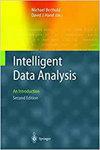Resformer: Combine quadratic linear transformation with efficient sparse Transformer for long-term series forecasting
IF 0.8
4区 计算机科学
Q4 COMPUTER SCIENCE, ARTIFICIAL INTELLIGENCE
引用次数: 0
Abstract
With the continuous development of deep learning, long sequence time-series forecasting (LSTF) has attracted more and more attention in power consumption prediction, traffic prediction and stock prediction. In recent studies, various improved models of Transformer are favored. While these models have made breakthroughs in reducing the time and space complexity of Transformer, there are still some problems, such as the predictive power of the improved model being slightly lower than that of Transformer. And these models ignore the importance of special values in the time series. To solve these problems, we designed a more concise network named Resformer, which has four significant characteristics: (1) The fully sparse self-attention mechanism achieves O(𝐿𝑙𝑜𝑔𝐿) time complexity. (2) The AMS module is used to process the special values of time series and has comparable performance on sequences dependency alignment. (3) Using quadratic linear transformation, a simple LT module is designed to replace the self-attention mechanism. It effectively reduces redundant information. (4) The DistPooling method based on data distribution is proposed to suppress redundant information and noise. A large number of experiments on real data sets show that the Resformer method is superior to the existing improved model and standard Transformer method.变压器:结合二次线性变换和高效稀疏变压器进行长期序列预测
随着深度学习技术的不断发展,长序列时间序列预测(LSTF)在电力消耗预测、交通预测和库存预测等方面受到越来越多的关注。在最近的研究中,变压器的各种改进型号受到青睐。虽然这些模型在降低Transformer的时间和空间复杂度方面取得了突破,但仍存在一些问题,如改进模型的预测能力略低于Transformer。这些模型忽略了时间序列中特殊值的重要性。为了解决这些问题,我们设计了一个更简洁的网络,命名为Resformer,它有四个显著的特点:(1)全稀疏自关注机制实现了O¹(𝐿𝑙𝑜𝑔𝐿)的时间复杂度。(2) AMS模块用于处理时间序列的特殊值,在序列依赖比对方面具有相当的性能。(3)利用二次线性变换,设计一个简单的LT模块来代替自关注机制。它有效地减少了冗余信息。(4)提出了基于数据分布的DistPooling方法来抑制冗余信息和噪声。在实际数据集上进行的大量实验表明,该方法优于现有的改进模型和标准Transformer方法。
本文章由计算机程序翻译,如有差异,请以英文原文为准。
求助全文
约1分钟内获得全文
求助全文
来源期刊

Intelligent Data Analysis
工程技术-计算机:人工智能
CiteScore
2.20
自引率
5.90%
发文量
85
审稿时长
3.3 months
期刊介绍:
Intelligent Data Analysis provides a forum for the examination of issues related to the research and applications of Artificial Intelligence techniques in data analysis across a variety of disciplines. These techniques include (but are not limited to): all areas of data visualization, data pre-processing (fusion, editing, transformation, filtering, sampling), data engineering, database mining techniques, tools and applications, use of domain knowledge in data analysis, big data applications, evolutionary algorithms, machine learning, neural nets, fuzzy logic, statistical pattern recognition, knowledge filtering, and post-processing. In particular, papers are preferred that discuss development of new AI related data analysis architectures, methodologies, and techniques and their applications to various domains.
 求助内容:
求助内容: 应助结果提醒方式:
应助结果提醒方式:


